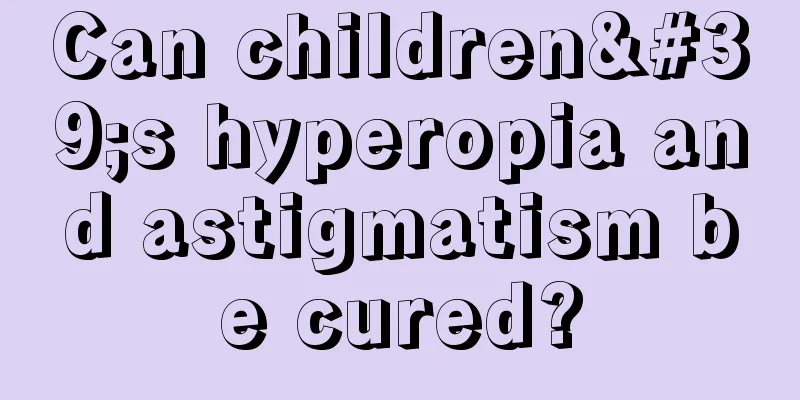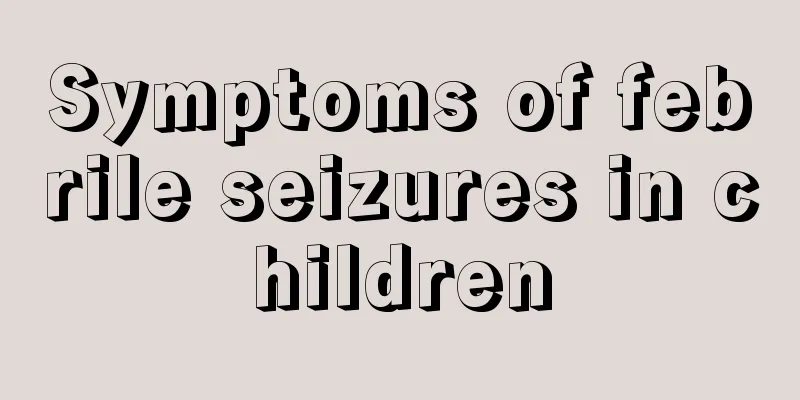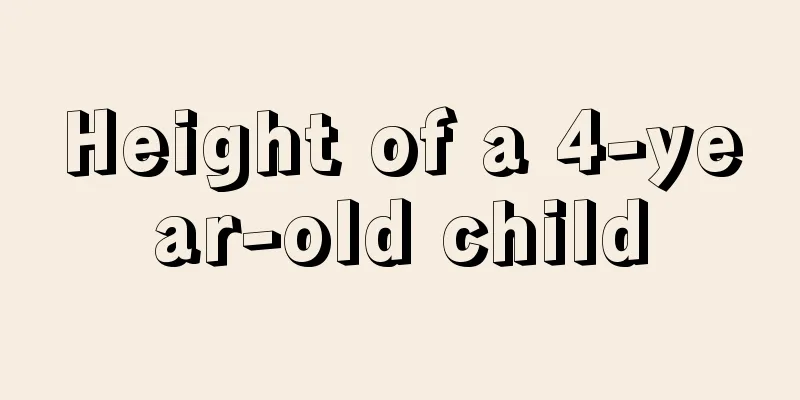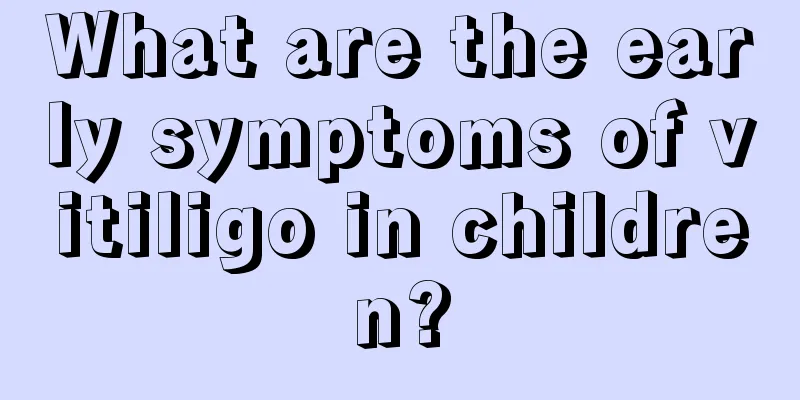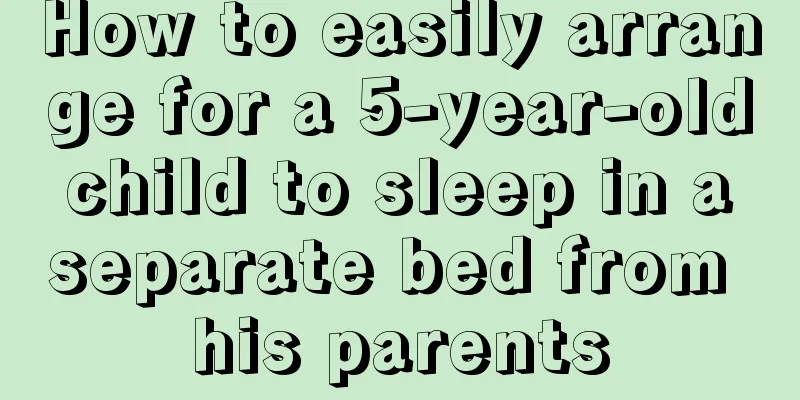What is the soft spot on the baby's head?
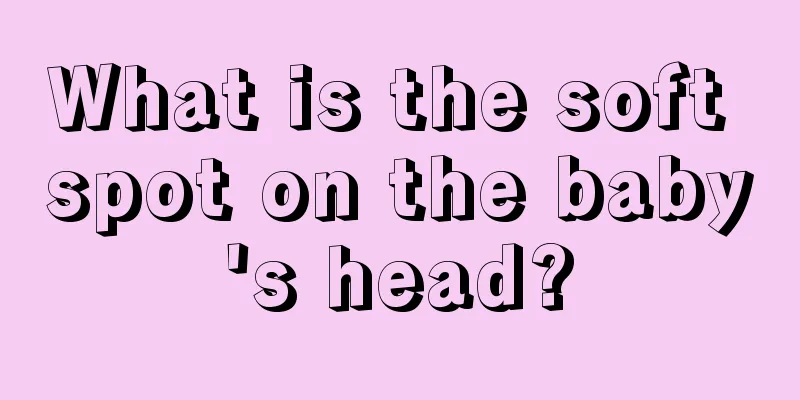
|
The top of a baby's head is usually soft, because the fontanelle has not yet completely closed. The fontanelle refers to the space between the skull bones. Generally, the fontanelle will be completely closed when the baby is 12 to 18 months old. Therefore, if parents find that the top of their baby's head is soft, they don't need to worry too much. Below, I will give you a detailed introduction to the relevant knowledge about fontanelle and fontanelle closure! 1. What is the fontanelle? The fontanelle refers to the bone gap formed by the loose connection of the skull bones of infants and young children. There are anterior fontanelle and posterior fontanelle. The anterior fontanelle is located at the front top, is diamond-shaped, and closes about 12 to 18 months after birth. The posterior fontanelle is located on the occipital, is triangular in shape, and closes about 2 to 4 months after birth. The "skylight" or "fontanelle" that people often refer to mainly refers to the anterior fontanelle. 2. Baby's fontanelle closure time Fontanelle (xìn mén) refers to the two bony "windows" on the top of a baby's head when he is born, which are called "fontanelles" in medicine. The posterior fontanelle usually closes 3 months after birth, while the anterior fontanelle does not close until 1 and a half years old. The "skylight" or "fontanelle" that people often refer to mainly refers to the anterior fontanelle. The human skull is made up of 6 bones. When a baby is born, the skull is not fully developed, so there are gaps between the bones, and two areas not covered by bones are formed on the top of the head and behind the occipital bone, which are called the anterior fontanelle and posterior fontanelle respectively. When a normal baby is born, the size of the anterior fontanelle is about 1.5×2cm. Generally speaking, the anterior fontanelle is basically closed when the baby is 1 to 1 year and 3 months old. The posterior fontanelle is generally not noticeable and usually closes 2-3 months after birth. 3. Classification of baby fontanelles 1. Anterior fontanelle If you touch the baby along the midline of the top of the head, you will find that the baby's skull has an opening in the front and back. They feel soft to the touch. The front end is called the anterior fontanelle and is diamond-shaped. It is the largest bone suture intersection on the skull. Because there is no bone here, it is slightly sunken and softer than other parts, and it will vibrate slightly when touched. Six months after the baby is born, the anterior fontanelle becomes smaller as the skull sutures gradually ossify. It closes and is replaced by bone by the baby's first year old, or no later than 18 months. 2. Posterior fontanelle The posterior fontanelle is located at the back of the baby's head, at the intersection of the suture between the occipital bone and the two parietal bones. It is small and sometimes even difficult to feel. The posterior fontanelle is almost closed when the baby is born, or can only accommodate the tip of a finger, and closes about 2-4 months after birth. Although the baby's fontanelle is not big, it is an important window reflecting the baby's physical health. By observing this small window when the baby is less than 1 year old, many diseases can be detected early, allowing the baby to be diagnosed and treated early. Therefore, mothers should know more about the normal development process of the baby's fontanelle and the abnormal phenomena that are prone to occur. |
<<: Can roseola infantum rash be exposed to wind?
>>: What causes headaches in children?
Recommend
Flowering has symptoms
Blossoms may cause obvious blisters on the skin, ...
What are the white spots on the nails of children?
It is very common to see white spots on children&...
Children cough at night
A child’s body and beauty are very fragile. Many ...
3 tips to teach your children to read happily
Teaching children to read is a daunting task for ...
What to do if your 4-year-old child drools
Children may develop various bad habits. Recently...
What should I do if my child has a fever and is having convulsions?
Children usually don't pay attention to their...
Analysis of the reasons why children cry at night
Many children cry at night, which makes their par...
What are the symptoms of infantile epilepsy?
Epilepsy is a common disease of the nervous syste...
What department should I go to for pigeon breast in children?
Pigeon chest is a medical disease, and many child...
How long does it take to save a drowning child?
Summer is here and many children like to play in ...
Causes and care of baby's stuffy nose
Many babies will have nasal congestion. In this c...
How to treat hypospadias in children?
When a child has hypospadias at the urethral open...
What should I do if I develop a fever after getting the meningococcal vaccine?
Parents must vaccinate their babies regularly. No...
What to do if baby's leg lines are asymmetrical
The healthy growth of the baby requires us to obs...
How to deal with children's fever and cold hands and feet? Three methods can solve it
Many babies may have cold hands and feet when the...


